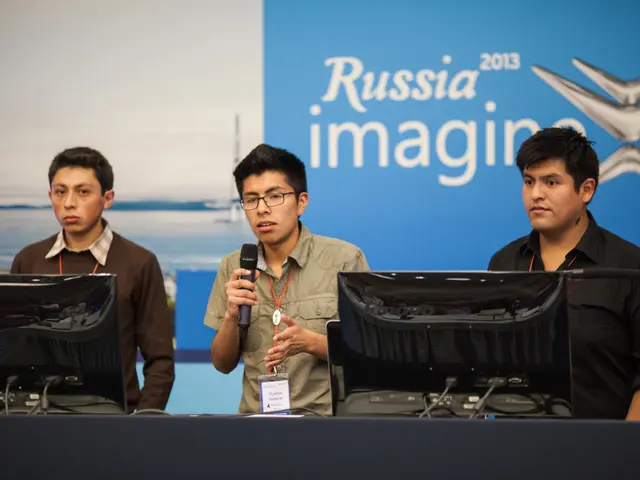Gas exports from Russia are being redirected as a result of successful drone attacks by Ukrainian forces.
In the wake of the ongoing conflict in Ukraine, the global energy market is experiencing a significant transformation, with far-reaching implications for prices, investment patterns, and LNG export dynamics that will persist long after the current crisis resolves.
The attack on Novatek's Ust-Luga gas condensate complex on August 24, 2025, has been a pivotal moment in this transformation. The incident, part of a broader Ukrainian strategy targeting Russian energy infrastructure, has severely limited Ust-Luga's processing capabilities, forcing a restructuring of Russia's gas export strategy.
The complexity of rerouting massive volumes of natural gas through alternative infrastructure creates bottlenecks that cannot be quickly resolved, reducing total export capacity. This has led to increased gas flaring at production sites and a heightened risk of methane leaks due to damaged infrastructure and hasty rerouting.
The situation highlights the growing intersection of energy security, geopolitical competition, and infrastructure vulnerability in the modern world. The forced rerouting of Russian gas exports carries significant economic consequences for Russia's energy sector, including higher transportation costs, reduced processing margins, infrastructure investment requirements, insurance and shipping premiums, and logistical challenges.
The disruptions have contributed to price volatility in global gas markets, with regional price disparities increasing as supply chains adjust to the new reality. European gas prices remain more sensitive to supply disruptions than Asian markets, leading to temporary increases in coal usage in some European markets due to gas supply concerns.
Russia has dramatically reoriented its gas export strategy in response to Western sanctions and infrastructure vulnerabilities, pivoting toward Asian markets, particularly China and India. China and India have emerged as the primary beneficiaries of redirected Russian gas exports, with China receiving large volumes via new pipelines such as 'Power of Siberia 2,' and India accessing cheaper Russian oil and gas supplies.
Some EU countries like Hungary, Slovakia, and Greece still import Russian pipeline gas via Turkstream, but overall, the main beneficiaries outside Europe are China and India. The resilience of Russia's adapted export routes will be tested as the conflict continues, with implications extending far beyond the energy sector.
To mitigate these challenges, Russia is enhancing the physical and cyber protection for its remaining export facilities, accelerating the development of alternative supply routes and import facilities, and reducing its reliance on any single export terminal. The eastward pivot in gas exports has been facilitated by pipeline expansion, development plans, LNG terminal investment, and maritime route diversification.
The transformation of Russian gas export routes may ultimately be remembered as one of the most significant and lasting economic consequences of the Ukraine conflict. LNG has become increasingly important in Russia's export rerouting strategy, offering greater flexibility in reaching distant markets. Russia is also showing growing interest in coordination with Qatar and other gas exporters.
Meanwhile, the uncertainty has accelerated renewable energy investments in import-dependent regions, as countries seek to diversify their energy sources and reduce dependence on single suppliers. The increased emissions from longer transportation routes for Russian gas exports and the potential for increased coal usage due to gas supply concerns are environmental challenges that must be addressed.
The situation underscores the importance of energy security and infrastructure resilience in an increasingly interconnected world. As the conflict in Ukraine continues, the global energy market will continue to adapt, with long-lasting impacts on prices, investment patterns, and geopolitical dynamics.
Contract restructuring is also underway, with long-term gas contracts increasingly including supply disruption clauses and flexibility provisions. Industry analysts project that full restoration of the Ust-Luga processing capacity will take 6-8 months, assuming no further attacks and availability of necessary equipment.
In the face of these challenges, Russia is building redundancy in condensate processing capacity, expanding its own tanker fleet to reduce dependence on international shipping, and seeking alternative export routes through neighboring states, increasing competition in the region. The accelerated development of these initiatives will be crucial in determining the long-term impact of the Ukraine conflict on the global energy market.
Read also:
- Shaping India's Economic Progression: Readying the Financial System for Tomorrow
- Two farmers in Zambia take legal action against two firms with Chinese connections, alleging an ecological disaster caused by their operations.
- Deepening EU-India relations despite apprehensions regarding Moscow connections
- Ongoing Transition Towards Cleanliness







